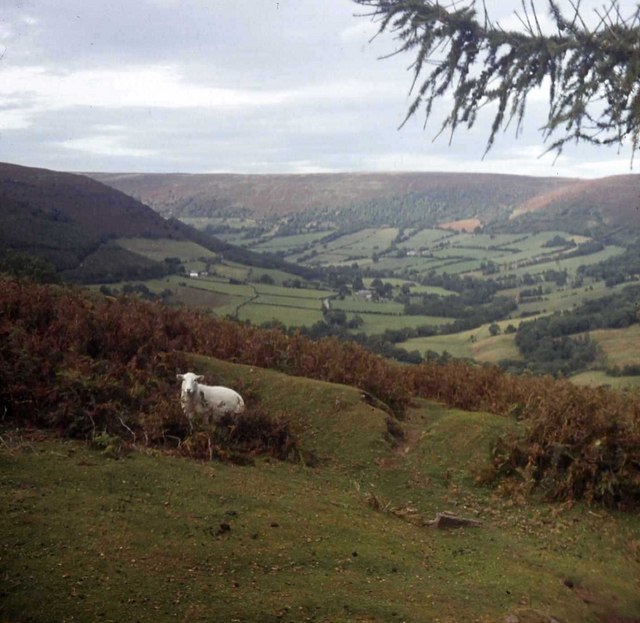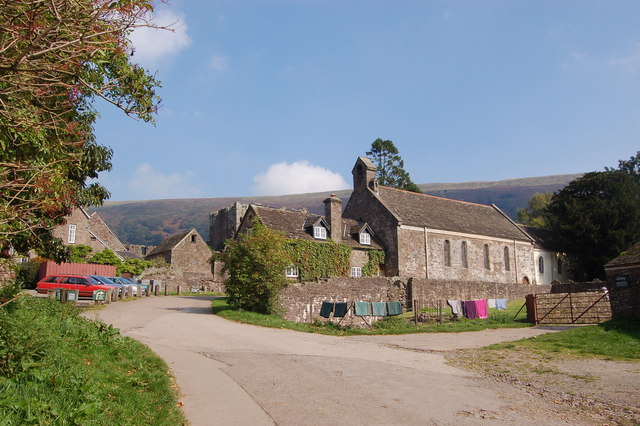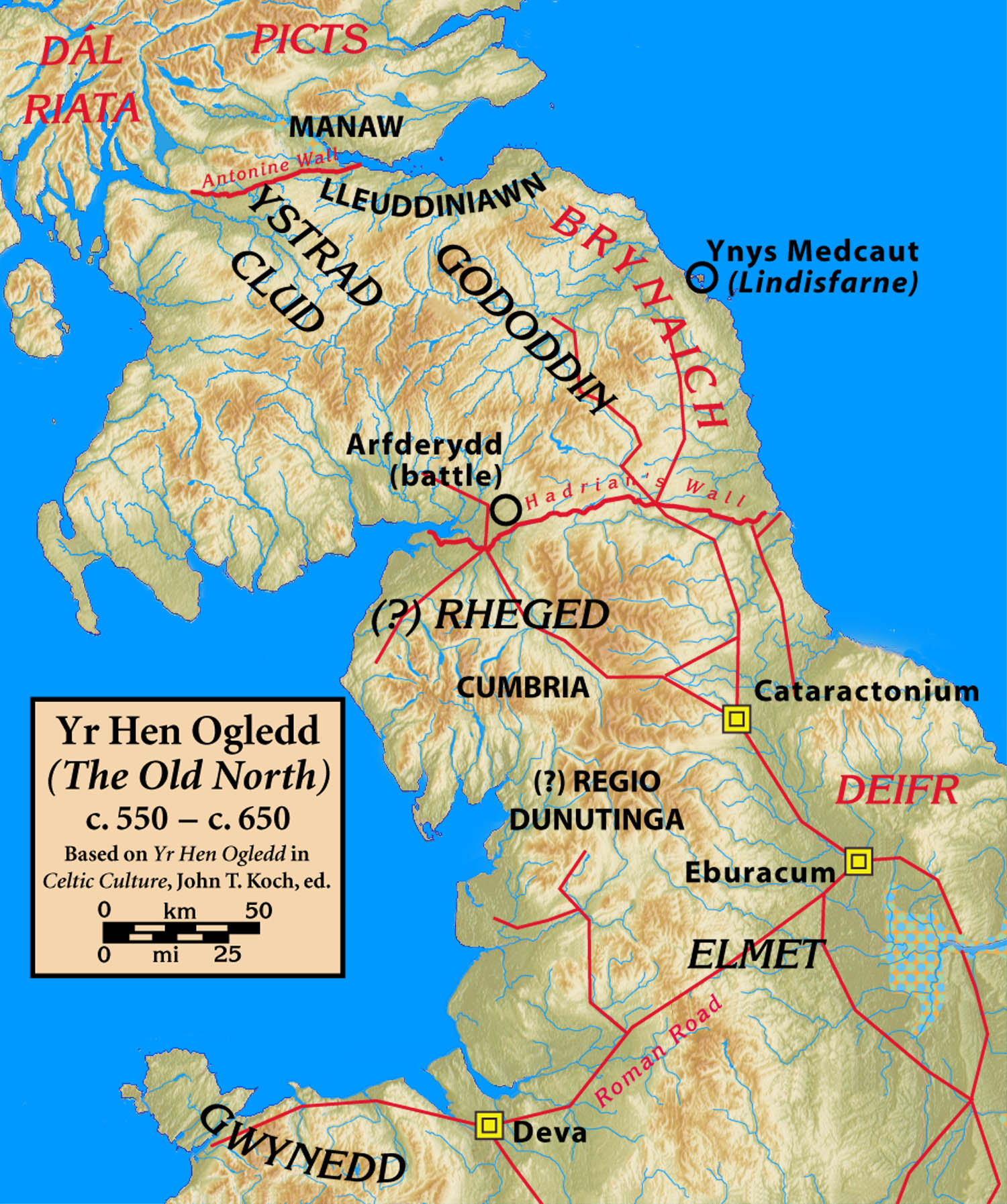|
Ewyas
Ewyas () was a possible early Welsh people, Welsh kingdom which may have been formed around the time of the Roman withdrawal from Britain in the 5th century. The name was later used for a much smaller commote or administrative sub-division, which covered the area of the modern Vale of Ewyas (now within Monmouthshire, Wales) and a larger area to the east including the villages of Ewyas Harold and Ewyas Lacy (now within Herefordshire, England). A legendary kingdom Some researchers interpret the evidence of the medieval Llandaff charters to suggest that early Ewyas may have encompassed much of south-east Wales, including the later kingdoms of Kingdom of Gwent, Gwent and Ergyng. However, these sources are open to several interpretations and this is not generally accepted by mainstream historians. Geoffrey of Monmouth gives the legend of Octavius (Welsh: Eudaf), "earl of Ewyas and Ergyng", in his famous pseudo-history ''Historia Regum Britanniae'', making him a descendant of Caratacus ... [...More Info...] [...Related Items...] OR: [Wikipedia] [Google] [Baidu] |
Ewyas Harold
Ewyas Harold () is a village and civil parish in the Golden Valley, Herefordshire, Golden Valley in Herefordshire, England, near the Wales-England border about halfway between Abergavenny, Monmouthshire, and Hereford. The population of this civil parish at the United Kingdom Census 2011, 2011 census was 883. It lies on the Dulas, Herefordshire, Dulas Stream, brook, and is contiguous with the neighbouring village of Pontrilas. The village is on the site of Ewyas Harold Castle, of which only the motte remains. Its name derives from the Ewyas, Welsh kingdom of Ewyas and from Harold, son of Ralph the Timid (Earl of Hereford), and grandson of King Æthelred the Unready. Ewyas Harold parish has a large area of common land rich in wildlife and ancient meadow saffron, a leftover from cultivation by the monks at Dore Abbey. Some villagers have commoner's rights. The village has a school, a fire station and a redundant church, redundant Roman Catholic, Catholic church. The Church of E ... [...More Info...] [...Related Items...] OR: [Wikipedia] [Google] [Baidu] |
Ewyas Lacy
Ewyas Lacy was an ancient hundred in south-west Herefordshire. It was part of the ancient Welsh region of Ewyas claimed by the de Lacy family following the Norman Conquest. It equated to the modern civil parishes of Craswall, Cusop, Llancillo, Llanveynoe, Longtown (with Clodock), Michaelchurch Escley, Newton, Rowlestone, St Margarets, and Walterstone. Ewyas Lacy ceased to be used as an administrative entity with the passing of the Local Government Act 1888. The final residual copyhold Copyhold was a form of customary land ownership common from the Late Middle Ages into modern times in England. The name for this type of land tenure is derived from the act of giving a copy of the relevant title deed that is recorded in the ...s were converted to freeholds in the Law of Property Act 1922. References External links * * {{coord, 52.005, -3.001, type:landmark_region:GB-HEF, display=title History of Herefordshire De Lacy family ... [...More Info...] [...Related Items...] OR: [Wikipedia] [Google] [Baidu] |
Vale Of Ewyas
The Vale of Ewyas () is the steep-sided and secluded valley of the River Honddu, in the Black Mountains of Wales and within the Brecon Beacons National Park. As well as its outstanding beauty, it is known for the ruins of Llanthony Priory, and for several noteworthy churches such as those at Capel-y-ffin and Cwmyoy. It is sometimes referred to as the "Llanthony Valley" as Llanthony is the village situated at the valley centre. Geography The Vale is named after the cantref of Ewias, which may have originally been a small Welsh kingdom following the Roman withdrawal from Britain and which, after the Norman conquest of England and Norman invasion of Wales, became an autonomous lordship within the March of Wales. In 1536, the Vale became part of the new county of Monmouthshire, while other parts of Ewyas to the east became incorporated into Herefordshire. At the head of the Vale is the Gospel Pass, which is reputed to have been named after the time in the 12th centu ... [...More Info...] [...Related Items...] OR: [Wikipedia] [Google] [Baidu] |
Llanthony Priory
Llanthony Priory () is a partly ruined former Augustinians, Augustinian priory in the secluded Vale of Ewyas, a steep-sided once-glaciated valley within the Black Mountains, Wales, Black Mountains area of the Brecon Beacons National Park in Monmouthshire, south east Wales. It lies seven miles north of Abergavenny on an old road to Hay-on-Wye at Llanthony. The priory ruins lie to the west of the prominent Hatterrall Ridge, a limb of the Black mountains. The main ruins are under the care of Cadw and entrance is free. The priory is a Grade I listed building as of 1 September 1956. Within the precincts of the Priory are three other buildings with Grade I listed status: the Abbey Hotel, Llanthony Priory, Abbey Hotel, listed on 1 September 1956; Church of St David, Llanthony, St David's Church, listed on the same date, and Court Farm Barn, Llanthony Priory, Court Farm Barn, listed on 9 January in the same year. History Foundation The priory dates back to around the year 1100, when ... [...More Info...] [...Related Items...] OR: [Wikipedia] [Google] [Baidu] |
Clodock
Clodock is a village in the west of Herefordshire, England. It lies on the River Monnow in the foothills of the Black Mountains, close to the border with Wales. The village is in the civil parish of Longtown. Before 1536 Clodock was in the marcher lordship of Ewyas Lacy. Until 1866 it was a large parish (until 1852 in the diocese of St David's), which included the chapelries of Craswall, Llanveynoe, Longtown and Newton. In 1866 each chapelry became a separate civil parish, and the village of Clodock became part of the civil parish of Longtown. The parish church is dedicated to St Clydog, king of Ewyas, who was killed during the 6th century. The present church dates from the 12th century, and is a Grade I listed building. It is completely un-Victorianised, with west gallery, box-pews, three-decker pulpit and 17th-century sanctuary furniture. The village pub, the Cornewall Arms, is a Grade II listed building and its traditional interior has been graded two stars ("v ... [...More Info...] [...Related Items...] OR: [Wikipedia] [Google] [Baidu] |
Kingdom Of Gwent
Gwent () was a medieval Welsh kingdom, lying between the Rivers Wye and Usk. It existed from the end of Roman rule in Britain in about the 5th century until the Norman invasion of Wales in the 11th century. Along with its neighbour Glywysing, it seems to have had a great deal of cultural continuity with the earlier Silures, Miranda Aldhouse-Green &al. ''Gwent In Prehistory and Early History: The Gwent County History'', Vol.1. 2004. . keeping their own courts and diocese separate from the rest of Wales until their conquest by Gruffydd ap Llywelyn. Although it recovered its independence after his death in 1063, Gwent was the first of the Welsh kingdoms to be overrun following the Norman conquest. History Establishment The area has been occupied since the Paleolithic, with Mesolithic finds at Goldcliff and evidence of growing activity throughout the Bronze and Iron Age. Gwent came into being after the Romans had left Britain, and was a successor state drawing on the cultur ... [...More Info...] [...Related Items...] OR: [Wikipedia] [Google] [Baidu] |
Longtown, Herefordshire
Longtown is a linear village and parish in Herefordshire, England. The parish includes the village of Clodock and had a population in mid-2010 of 543, increasing to 620 at the 2011 Census. Location Longtown is located north east of Abergavenny and south west of Hereford on the eastern edge of the Black Mountains, Wales, part of the Brecon Beacons National Park. The extensive Hatterall Ridge lies about a mile to the west of the village, and the Black Hill (Herefordshire) two miles to the north. There are car parks at the feet of these mountains, a large one below Black Darren, a notable local landmark comprising a large landslip to the west of the town. There is a smaller car park below the Black Hill, and both are mainly used by walkers to access the hills. There are numerous footpaths and bridleways on the mountains, and they include Offa's Dyke Path, which runs north-south along the top of the Hatterall ridge. History Longtown has an early Norman motte and bailey ... [...More Info...] [...Related Items...] OR: [Wikipedia] [Google] [Baidu] |
Hen Ogledd
Hen Ogledd (), meaning the Old North, is the historical region that was inhabited by the Celtic Britons, Brittonic people of sub-Roman Britain in the Early Middle Ages, now Northern England and the southern Scottish Lowlands, alongside the fellow Brittonic Celtic Elmet, Kingdom of Elmet, in Yorkshire. Its population spoke a variety of the Brittonic languages, Brittonic language known as Cumbric which is closely related to, if not a dialect of Old Welsh. The Welsh people, people of Wales and the Hen Ogledd considered themselves to be one people, and both were referred to as Cymry ('fellow-countrymen') from the Brittonic word ''combrogi''. The Hen Ogledd was distinct from the parts of Great Britain inhabited by the Picts, Anglo-Saxons, and Scoti. The major kingdoms of the Hen Ogledd were Elmet, Gododdin, Rheged, and the Kingdom of Strathclyde (Welsh: ''Ystrad Clud''). Smaller kingdoms included Aeron (kingdom), Aeron and Calchfynydd. Eidyn, Lothian, Lleuddiniawn, and Manaw Gododdin ... [...More Info...] [...Related Items...] OR: [Wikipedia] [Google] [Baidu] |
The Dream Of Macsen Wledig
Welsh mythology (also commonly known as ''Y Chwedlau'', meaning "The Legends") consists of both folk traditions developed in Wales, and traditions developed by the Celtic Britons elsewhere before the end of the first millennium. As in most of the predominantly oral societies Celtic mythology and history were recorded orally by specialists such as druids (). This oral record has been lost or altered as a result of outside contact and invasion over the years. Much of this altered mythology and history is preserved in Medieval Welsh literature, medieval Welsh manuscripts, which include the Red Book of Hergest, the White Book of Rhydderch, the Book of Aneirin and the Book of Taliesin. Other works connected to Welsh mythology include the ninth-century Latin historical compilation ''Historia Brittonum'' ("History of the Britons") and Geoffrey of Monmouth's twelfth-century Latin chronicle ''Historia Regum Britanniae'' ("History of the Kings of Britain"), as well as later Welsh folklore, ... [...More Info...] [...Related Items...] OR: [Wikipedia] [Google] [Baidu] |
Elen (saint)
Saint Elen (, lit. "Helen of the Hosts"), often anglicized as Helen, was a late 4th-century founder of churches in Wales. Although never formally canonized by Rome, Elen is traditionally considered a saint in the Welsh Church; in English she is sometimes known as Saint Helen of Caernarfon to distinguish her from Saint Helena ("Helen of Constantinople"). Church tradition Traditionally, she is said to have been a daughter of the Romano-British ruler Octavius / Eudaf Hen (and therefore sister of Conan Meriadoc) and the wife of Magnus Maximus / Macsen Wledig, the 4th-century emperor in Britain, Gaul, and Spain who was killed in battle in 388.MacKillop, James. "Elen 1", '' A Dictionary of Celtic Mythology'', OUP, 2004 Elen was mother ... [...More Info...] [...Related Items...] OR: [Wikipedia] [Google] [Baidu] |
Macsen Wledig
Magnus Maximus (; died 28 August 388) was Roman emperor in the West from 383 to 388. He usurped the throne from emperor Gratian. Born in Gallaecia, he served as an officer in Britain under Theodosius the Elder during the Great Conspiracy. In 383, he was proclaimed emperor in Britannia, and in Gaul the next year, while Gratian's brother Valentinian II retained Italy, Pannonia, Hispania, and Africa. In 387, Maximus's ambitions led him to invade Italy, resulting in his defeat by Theodosius I at the Battle of Poetovio in 388. In the view of some historians, his death marked the end of direct imperial presence in Northern Gaul and Britannia. Life Birth, army career Maximus was born in Gallaecia, Hispania, on the estates of Count Theodosius (the Elder) of the Theodosian dynasty, to whom he claimed to be related. J. B. Bury ed. (1924)''The Cambridge Medieval History'' p. 238 In their youth, Maximus and Theodosius I served together in Theodosius the Elder's army in Britannia. Maximus ... [...More Info...] [...Related Items...] OR: [Wikipedia] [Google] [Baidu] |
Clydog
Clydog (also known as Clydawg, Clodock, Clitaucus, Cleodicus, Cladocus) was a sixth-century Welsh king of Ergyng who became a saint. His feast day is traditionally held on 3 November but is also celebrated on 19 August. In imagery, Clydog is represented as a king holding a sword and a lily. Life Clydog was a member of the clan of the legendary king , whose children and grandchildren became the famed saints of and |




